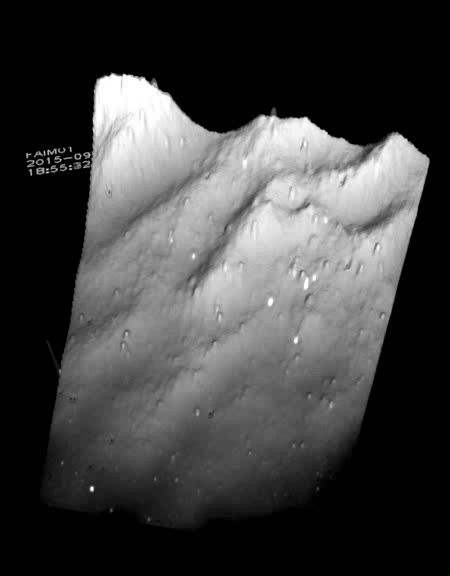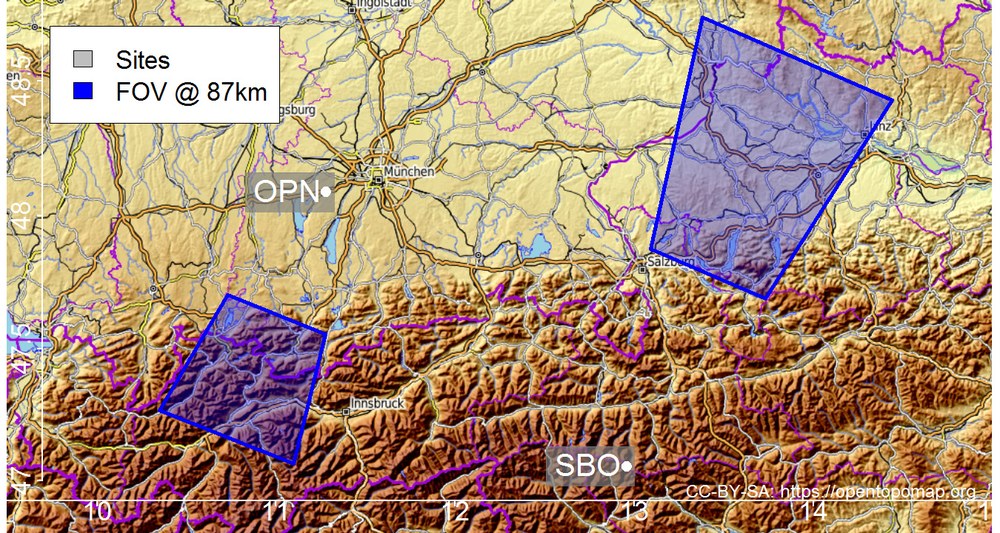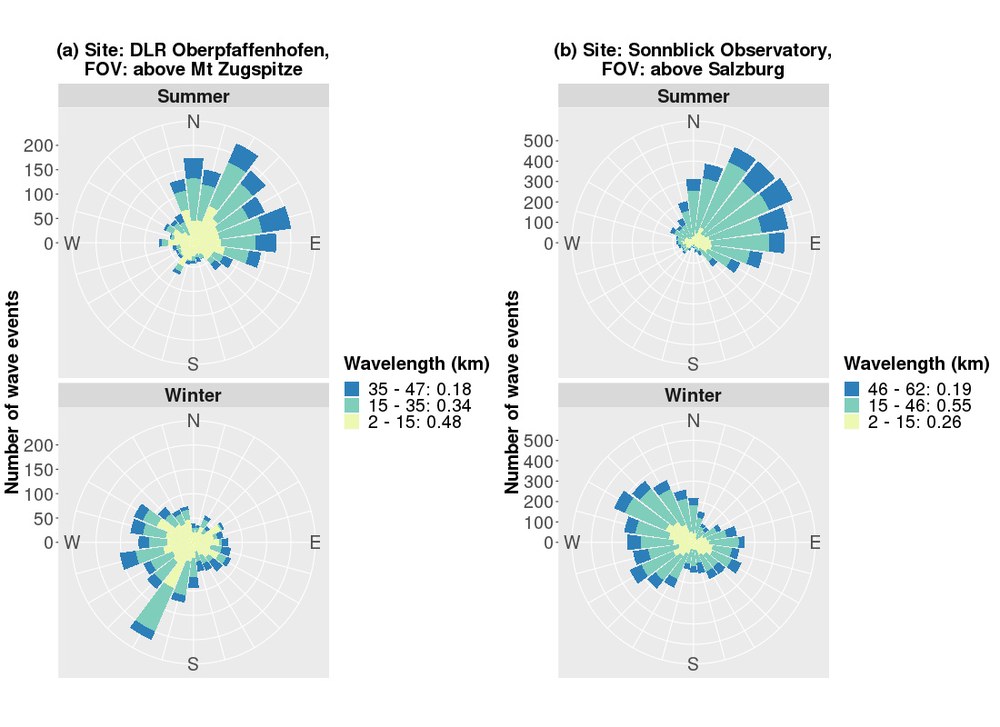Surf Zone at the Border to Outer Space: Where Air Waves Collapse
Waves not only influence the dynamics of water in the ocean but also of air in the atmosphere. So-called gravity waves are to be found especially in the upper mesosphere / lower thermosphere at about 80 to 100 kilometres altitude.

Surf Zone at the Border to Outer Space: Where Air Waves Collapse
Your consent to the storage of data ('cookies') is required for the playback of this video on Quickchannel.com. You can view and change your current data storage settings at any time under privacy.
Figure 1 is a film sequence based on DLR measurements that shows the high wave dynamics. These gravity waves are interesting because they aid our understanding of processes going on in the atmosphere. They are often initiated in the lower atmosphere near Earth's surface, for example by convection, or air flowing over mountains. Once formed, they can spread out up to high altitudes. The critical point is that as these waves are generated energy is removed from the lower atmosphere and transported elsewhere. Only when they break do the waves release this energy to their surroundings. Gravity waves thus contribute very effectively to distributing energy in the atmosphere. One of the many consequences is that the atmosphere heats up at places where the waves break. Another is that even global wind systems can be slowed down, or accelerated, by breaking waves. We now know that both occurrences can have aftereffects. So there are enough reasons to investigate these processes in more detail to better understand what is taking place.
Over 20 million camera recordings were analysed to assess these atmospheric dynamics. The data comes from FAIM, a near-infrared camera that recorded gravity waves at 90 km altitude at DLR in Oberpfaffenhofen every night during 2014, and from 2015 to 2017 at a partner observatory located at Hoher Sonnblick, a glaciated mountain in Austria.
This observatory and DLR's German Remote Sensing Data Center are both part of the Virtual Alpine Observatory (VAO), a network that so far includes research groups and observatories in eight countries. They are engaged in jointly addressing complex science issues relating to the Alpine region. Three-year time series of measurement data were used to derive the direction of horizontal movement and the wavelengths of the associated gravity waves. From the direction of propagation it is possible to determine such features as the direction of the impulse flow, and thus estimate its influence on global circulation patterns.
In summer, the data at both stations (Fig. 3) show that gravity waves propagate horizontally in a definite north-easterly direction. This northern bias has also been observed at other locations in the northern hemisphere. In winter, by contrast, the dominant direction of propagation differs between the two stations. In data from Oberpfaffenhofen the direction shifts to the south-west, while the gravity waves recorded at Sonnblick Observatory have a general westward trend. There is no noteworthy southern component as in Oberpfaffenhofen.
This result clearly shows the coupling of different levels of the atmosphere up to 90 km altitude: EOC scientists attribute the identified summer propagation pattern eastward and the winter pattern westward to wind fields in the stratosphere, which absorb waves from the troposphere in a way that generates this pattern.
Waves that are frequently generated in the troposphere move upward and horizontally in various directions. Waves moving in the same direction as stratospheric winds are more apt to be absorbed by them, so they do not reach higher atmospheric levels and are not observed there. The visible propagation pattern is thus exactly the opposite of the season-dependent wind direction. On the other hand, the absorption of gravity waves also influences the wind fields themselves, which gives rise to reciprocal interactions. These wind fields clearly show the west-east components of the observed propagation direction, but the reason for the northern preference in summer has not been definitively explained and is a topic of ongoing research.
In the meantime DLR's Remote Sensing Data Center in Oberpfaffenhofen (EOC) is operating four such camera systems in the Alpine region to look into this and other questions relating to atmospheric dynamics. This work contributes to the investigation of global circulation patterns and how they change and to specifying the local influence of the Alps in this scenario.
The work was financed by the Bavarian State Ministry for the Environment and Consumer Protection with the projects LUDWIG and VoCaS-ALP.


